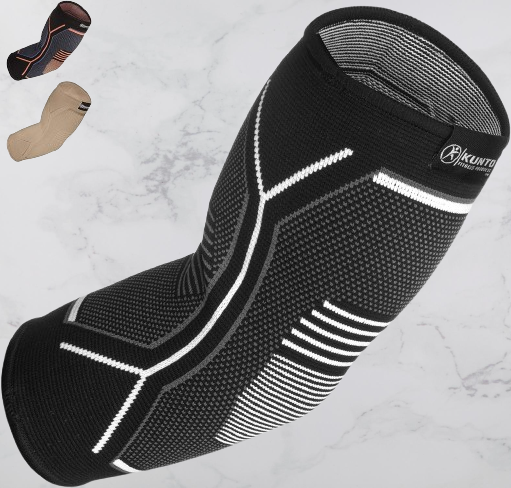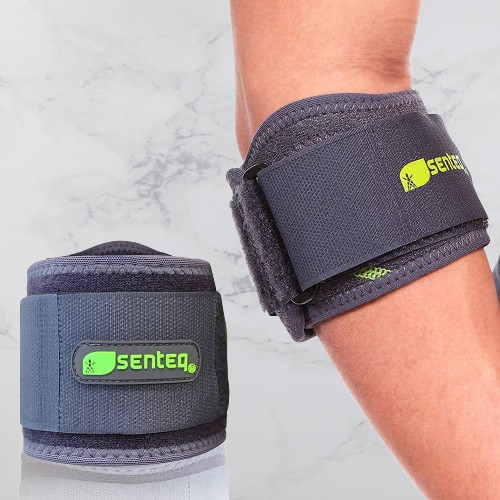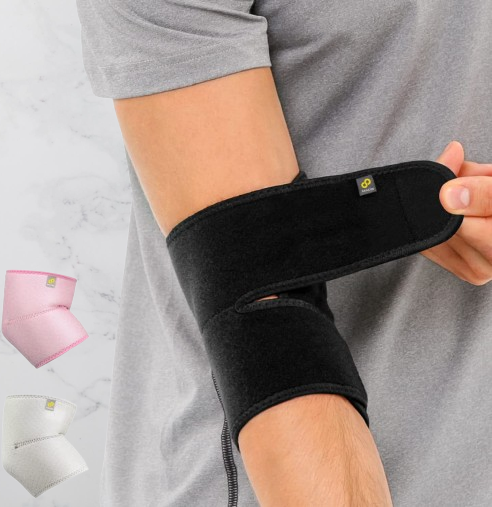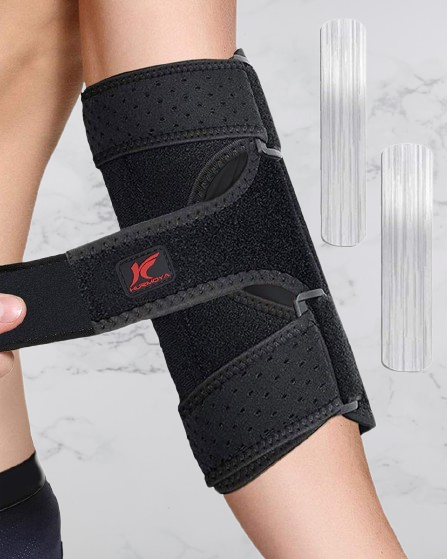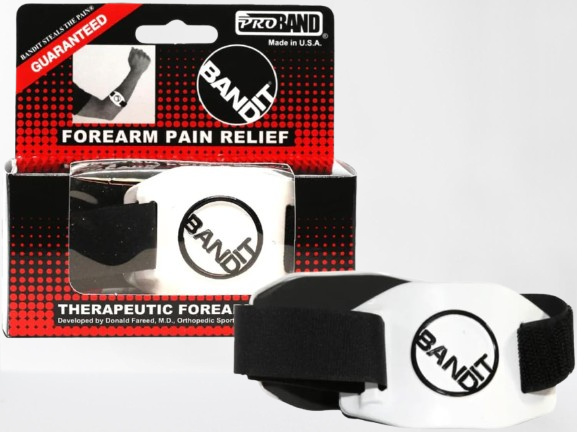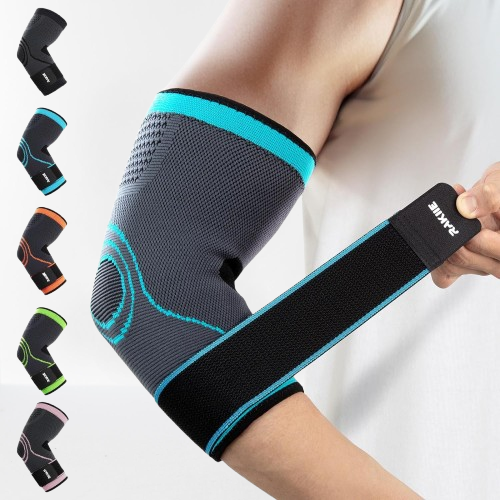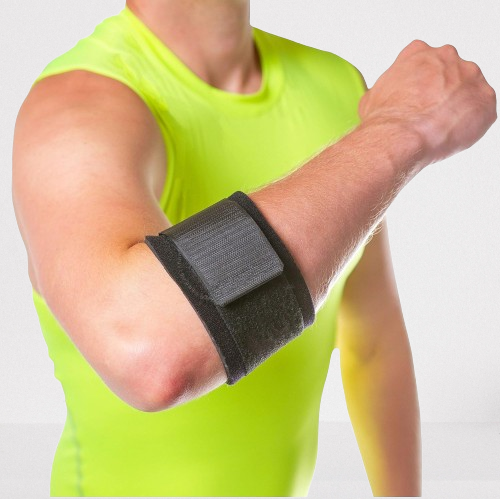Benefits of Using Tennis Elbow Splint
Using a tennis elbow splint can provide several benefits, especially if you’re dealing with symptoms of tennis elbow (lateral epicondylitis). Here are some key advantages:
- Pain Relief: The splint helps reduce pain by resting the elbow and relieving stress on the tendons and muscles. This can be particularly beneficial for managing discomfort during daily activities.
- Reduction of Strain: By providing support to the forearm muscles and tendons, the splint helps reduce strain on the elbow joint. This can help prevent further irritation and promote healing.
- Improved Function: With the splint reducing pain and strain, you may find it easier to perform everyday tasks and engage in activities that were previously uncomfortable or difficult.
- Enhanced Healing: By limiting movement and reducing strain on the elbow, a splint can help the tendons and muscles heal more effectively. This is often a crucial part of a comprehensive treatment plan for tennis elbow.
- Support and Stabilization: The splint provides support and stabilization to the elbow, helping to maintain proper alignment and reduce the risk of exacerbating the condition.
- Injury Prevention: For individuals prone to or recovering from tennis elbow, wearing a splint during activities that stress the elbow can help prevent further injury or recurrence.
- Encouragement of Proper Use: Wearing a splint can serve as a reminder to use the elbow properly and avoid movements that might aggravate the condition.
- Versatility: Many tennis elbow splints are adjustable and designed to be worn during various activities, allowing for flexibility in how you use them throughout the day.
While a tennis elbow splint can be very effective, it’s also important to combine its use with other treatments, such as physical therapy, rest, and proper techniques to address the root causes of tennis elbow.
Importance of Using Tennis Elbow Splint
Using a tennis elbow splint is crucial for managing and alleviating the symptoms of tennis elbow (lateral epicondylitis). This common condition, characterized by pain on the outer part of the elbow, results from overuse or strain of the forearm muscles and tendons. A tennis elbow splint provides significant benefits by offering targeted support and reducing strain on the affected area. It helps stabilize the elbow joint, allowing the tendons and muscles to rest and heal more effectively.
The splint works by redistributing stress away from the injured tendons, thereby reducing pain and inflammation. It also helps to prevent further injury by limiting movements that could exacerbate the condition. With the reduced strain, individuals can experience improved functionality and reduced discomfort during daily activities. Additionally, the splint serves as a visual and physical reminder to avoid harmful movements, which can aid in recovery and prevent recurrence.
In summary, using a tennis elbow splint is an essential component of managing tennis elbow, offering pain relief, support, and aiding in the healing process. Combining the splint with other treatments, such as physical therapy and ergonomic adjustments, can further enhance recovery and prevent future issues.
Types of Tennis Elbow Splint
There are several types of tennis elbow splints, each designed to address specific aspects of the condition and accommodate different needs. Here are the main types:
- Forearm Strap (Counterforce Brace): This is the most common type of splint. It wraps around the forearm just below the elbow and applies gentle pressure to the muscles and tendons, reducing strain on the elbow. This helps alleviate pain by redistributing forces away from the elbow joint.
- Elbow Sleeve: An elbow sleeve is a neoprene or elastic band that fits snugly around the elbow. It provides compression and warmth, which can help reduce swelling and discomfort. While it doesn’t offer as much targeted pressure as a forearm strap, it can be useful for mild cases.
- Elbow Brace with Adjustable Straps: These braces often include a combination of padding and adjustable straps to provide customized support and compression. They can be adjusted to apply more or less pressure depending on the severity of the symptoms and individual comfort.
- Elbow Orthosis: This is a more rigid type of splint that provides greater immobilization of the elbow joint. It restricts movement to prevent further irritation and allows the tendons and muscles to rest more effectively. These are usually recommended for more severe cases or post-surgery.
- Air-Cushion Braces: These braces incorporate inflatable air cushions that can be adjusted to provide targeted compression and support. The air cushions help to reduce pressure on the elbow and can be tailored to individual needs.
- Heat or Cold Therapy Braces: Some splints are designed to accommodate heat or cold packs. These can be used to manage inflammation and pain in addition to providing support.
Each type of splint has its own advantages and may be more suitable for different stages of recovery or levels of activity. It’s essential to choose the right type based on the severity of the condition and the specific needs of the individual. Consulting a healthcare professional can help determine the most appropriate option.
Top 5 Tennis Elbow Splint
Features of the Tennis Elbow Splint
Tennis elbow splints come with various features designed to alleviate pain and support recovery. Key features to consider include:
- Adjustable Straps: Many splints have adjustable straps for a customized fit. This feature allows you to apply the right amount of pressure and ensure the splint stays securely in place.
- Padding and Cushioning: Soft padding or cushioning in the splint helps distribute pressure evenly and reduces irritation on the skin. This is especially important for comfort during prolonged wear.
- Compression: Some splints, like forearm straps, provide targeted compression to reduce strain on the elbow tendons. Compression can help decrease swelling and pain.
- Breathable Materials: Look for splints made from breathable fabrics, such as neoprene or mesh, to enhance comfort and prevent overheating or excessive sweating.
- Heat/Cool Therapy Compatibility: Certain splints have pockets or compartments for heat or cold packs. This feature allows for additional therapeutic benefits, such as reducing inflammation or soothing pain.
- Ergonomic Design: A well-designed splint contours to the natural shape of the arm and elbow, ensuring a better fit and more effective support.
- Size and Fit Options: Available in various sizes, ensuring you can find a splint that fits comfortably and provides optimal support.
Selecting a splint with these features can enhance its effectiveness in managing tennis elbow symptoms and supporting the healing process.
How to Wear and Use a Tennis Elbow Splint Properly?
Wearing and using a tennis elbow splint properly is crucial for maximizing its benefits. Here’s how to do it effectively:
- Positioning: Place the splint or brace around your forearm, just below the elbow. For forearm straps, position it around the lower part of the forearm to apply pressure where it’s needed. Ensure the splint covers the area where you feel pain.
- Adjusting Fit: Fasten the splint snugly but not too tightly. It should be secure enough to stay in place but loose enough to avoid cutting off circulation or causing discomfort. Adjustable straps can help achieve the right tension.
- Wearing Duration: Follow the manufacturer’s recommendations or your healthcare provider’s advice regarding how long to wear the splint each day. Typically, it’s worn during activities that exacerbate the pain or throughout the day as needed.
- Comfort and Placement: Make sure the splint is comfortable and doesn’t cause additional irritation or pressure. Adjust it if necessary to ensure it’s providing the right support.
- Activity: While wearing the splint, avoid activities that may strain the elbow. Use it as a preventive measure during repetitive tasks or sports.
- Regular Checks: Inspect the splint and your skin regularly for any signs of irritation or improper fit.
Proper use of a tennis elbow splint can help alleviate pain, support healing, and prevent further injury.
How to Care for a Tennis Elbow Splint?
Caring for a tennis elbow splint ensures it remains effective and hygienic. Follow these steps to maintain your splint:
- Cleaning: Regularly clean the splint according to the manufacturer’s instructions. Most splints can be wiped down with a damp cloth and mild soap. For removable fabric parts, hand wash them in cool water with mild detergent and air dry. Avoid machine washing or drying unless specified.
- Inspection: Frequently check the splint for signs of wear and tear, such as frayed straps or damaged padding. Ensure that all straps and fasteners are functioning properly to maintain optimal support.
- Drying: Allow the splint to air dry completely after cleaning or if it gets wet. Avoid exposing it to direct heat sources like radiators or hairdryers, as excessive heat can damage the material.
- Storage: Store the splint in a cool, dry place when not in use. Avoid folding or compressing it in a way that might deform its shape or affect its effectiveness.
- Skin Care: Ensure the area of the arm in contact with the splint is clean and dry to prevent skin irritation or infection. If you experience any irritation, remove the splint and consult a healthcare professional.
Proper care will extend the life of your splint and help maintain its effectiveness in managing tennis elbow symptoms.
What is the best Tennis Elbow Splint company?
Choosing the best tennis elbow splint company depends on factors like product quality, comfort, and customer satisfaction. Several reputable brands are well-regarded for their tennis elbow splints:
- Bauerfeind: Known for high-quality orthopedic products, Bauerfeind offers splints that combine effective support with comfort. Their products are often praised for their durability and precise fit.
- McDavid: McDavid is a popular brand in sports medicine, offering a range of elbow braces and splints. Their products are known for their adjustable features and support, suitable for various levels of tennis elbow.
- Futuro: A trusted name in medical and orthopedic supports, Futuro offers affordable and well-designed elbow braces and splints. Their products are designed for ease of use and comfort.
- DonJoy: Specializing in orthopedic supports and braces, DonJoy provides high-quality tennis elbow splints known for their effectiveness and advanced materials.
- EzyFit: EzyFit offers a range of tennis elbow braces that are often praised for their affordability and ease of use. Their products provide good support and are suitable for various activity levels.
- ProCare: ProCare is known for its comfortable and adjustable splints, designed to provide effective relief for tennis elbow while allowing for a range of activities.
When selecting a splint, consider the specific features you need, such as adjustability, padding, and material quality. Reading customer reviews and consulting with a healthcare professional can also help in making the best choice for your needs.
